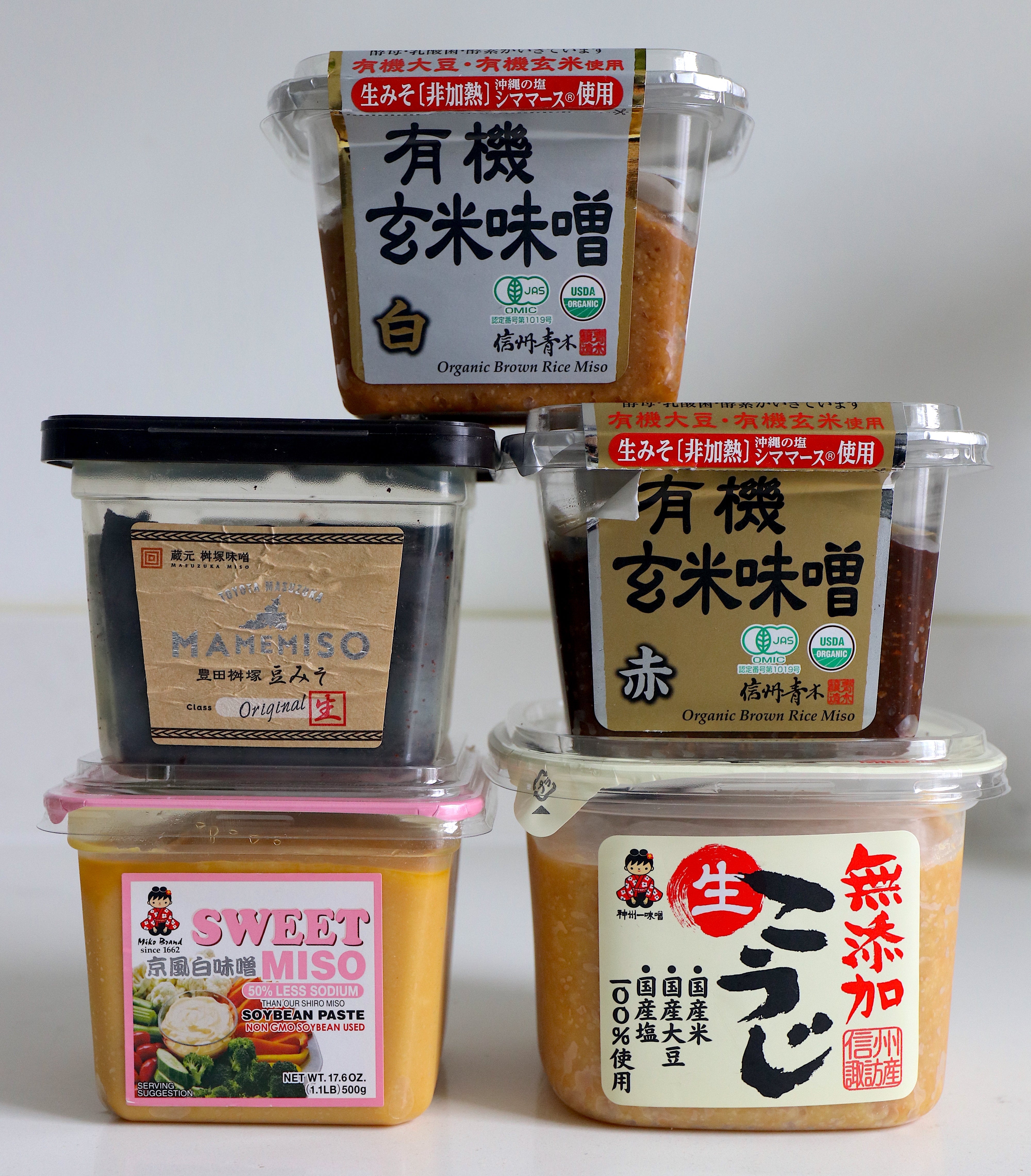
3 Types of Miso (How To Use Them & What They Taste Like)
By Alex C
Senior Food Writer at Pro Home Cooks

Miso is a household staple in Japan that has gained immense popularity in America. So much so that popular grocery stores have stocked their shelves with high quality miso paste or have even made their own to sell! You as a pro home cook probably have a container of miso in your fridge right now but did you know that there are many different kinds of miso pastes? Because the process of making miso can be so tailored to one's preference there are a variety of different miso pastes on the market.

For a quick explanation, miso is a fermented bean paste made up of water, koji, soybeans, and salt. Koji is a cooked grain that has been inoculated with a fermentation culture called Aspergillus oryzae mold. You can actually switch up the type of koji from the typical white rice koji to a brown rice or even a barley koji to create a more custom miso. For an even more unconventional miso, you can swap out the soybeans for chickpeas! Even the temperature and climate that it is fermented in will have an affect on the final flavor profile. So cool, right?
If learning about the process of making miso interests you, Mike G. created a full video on how to make miso here and I go into the details of the process here if you want to give it a full read.

This is all to say that miso paste isn't a one size fits all product. Since miso is a fermented product that means it can be stopped at any point of the fermentation process. Typically, miso is categorized by color and the three main colors are: white, yellow, and red. The color of the miso gives an indication of the length of fermentation, the ratio of ingredients, and the depth of flavor. Lighter miso has a more mild taste while darker miso pastes are more concentrated. “Which miso paste is better for what dish?” “What do Japanese restaurants use for their miso soups?” ”I’ve never had miso paste, which one should I try first?” I’ve gotten these questions a ton so let’s break down the three main kinds of miso pastes!
White Miso AKA ‘Shiro Miso’

White miso aka ‘shiro miso’ is stopped at the earliest stage of the fermentation process. It can range from a creamy white to a very pale beige color and the sodium content is so low because of the high amount of rice used to ferment it. Because of its sweeter flavor profile, you can spread it on a piece of toast and enjoy it plain but it’s also perfect for salad dressings, mayos, soups, and light sauces. I personally like to use white miso for baking because the flavor profile is so mild and salt content is so low that it's perfect to add them liberally into cookies, frostings, and ice cream bases for a depth and balance of flavors. Shiro miso is the perfect starting place for beginners because it is so mild.
Yellow Miso AKA ‘Shinshu Miso’

The next in line is yellow miso aka ‘shinshu miso’. Its color ranges from a creamy yellow to a very light brown. Yellow miso is usually made from soybeans fermented in barley with very little rice. Because of this change and a longer fermentation time, this makes yellow miso the perfect all purpose miso. Its flavor profile still holds the nuttiness of the white miso but is also starting to develop that umami funkiness of a more developed red miso. Its flavor is more prominent and will have a more pronounced effect on your dishes making the perfect next step into the world of funkier misos. It is the most versatile miso out of the three!
I personally like to use yellow miso in soups and marinades because of its stronger saltier and umami flavor profile. Yellow miso is perfect for the quintessential homemade miso soup for the entire family. Throw in a couple of cubes of silken tofu and some seaweed and you have yourself the perfect side to a beautiful japanese dinner at home.
Red Miso AKA ‘Aka Miso’

Welcome to the world of absolute umami and funk: Red miso also known as ‘aka miso’. It is the longest ferment miso out of the three which means it has the funkiest most dynamic flavor profile out of the three. Fermented with the highest amount of soybeans along with barely, rice, and other grains, red miso typically ranges from a deep red to a dark brown color. Because of its pungent and dynamic flavor profile, red miso is mainly used in soups, brasies, stews and other richer dishes that can hold its own.
Red miso is the most commonly used miso paste in restaurants but to get even crazier, some mix white or yellow miso with red miso so that you have a dynamic multilayered flavor of umami. This kind of miso is called “awase miso”. The delicate nature of the white mixed with the richness of the red is a technique commonly used in restaurants and homes alike! I mixed yellow miso and white miso to make this miso ginger pork belly over rice. Check out the recipe down below!

TOP ARTICLES

Sourdough Baking School
Master the art of sourdough bread baking in the most comprehensive baking class on the internet. This class features over three hours of baking content to help you start your sourdough journey.
See More
